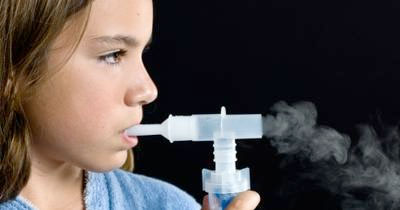Is a 2,000% Financial Rate of Return Possible in One Year in One Classroom?
So how many sick days might be saved in a single 180 day school year in a single classroom with 22 students and 1 teacher. Absenteeism is typically reported annually by each school building. You can go to the state’s reporting website to get prior years absentee rates. The number of student sick days is usually directly related to the school’s level of classroom air quality. A high rate of attendance is 98%, typical is 96% and poor can be as low as 90-92%.
Calculating the Savings Potential of Fewer Sick Days
Assuming 23 people in the classroom there are 4,140 total attendance days in a 180 day school year. Each 1% missed is 41.40 missed school days. Most are from illness, but some will be extended family trips for weddings, funerals or other events. The vast majority will be caused by a respiratory related illness or a contagious classroom illness.
So a 2% improvement in attendance from say 94.5% to 96.5% at a school would mean each 22 students, plus the classroom teacher would have a combined 83.8 fewer missed school days. That saves an estimated $25,170 since the government’s best estimate of the cost to the family, employer and insurance provide is $300 per missed day for an elementary student. This $300 takes into account the number of families where both parents work, and a sick day means the mom or dad has to miss work to care for the sick child. It includes the cost of over the counter medications, the cost of office visits, co-pays, insurance payouts, Medicaid payouts, medical testing costs and prescription drug costs. They also estimated the average cost to the employer for the lost work product that the missing employee did not perform for the employer. Parents with higher salaries actually lost much more than $300. New health insurance has much higher deductibles and co-pays, so savings go directly to the families instead of insurance companies.
This means saving 83.8 sick days are equal to saving costs for the families, employers and insurance of about $25,170 that could be saved if those 2% of annual absenteeism could be eliminated. Just a 2% savings means that means the first year payback would be about 20 times, or 2,000%, the first-year cost for each classroom is approximately $1,250 total if you count all the installation costs of installing Purifans in the classroom. If the same 2% reduction in sick days was again achieved in year 2 or beyond with the very low annual filter change cost of $168 per classroom means, the $25,170 saved would be a 149 times the annual filter cost as a financial ROI payback or a 14,900% ROI payback.
Is 2% the Best Improvement Schools Have Achieved?
No. One school with a history of hidden mold and poor air quality had an attendance rate of 90.2% in 2004, but that grew to an attendance rate of 96.24% in 2005 after installing Purifans throughout their school building. This is a 61% reduction in missed school days, or an average of 11.24 fewer sick days per child. In a 22 student classroom that means 247.28 sick days were saved, compared to the prior year, in each classroom in just one school year. The school also reported a 50% reduction in teacher sick days, and a 70% reduction in logged use of inhalers at the nurses station. With the same teachers, same books, same building, NCLB test scores jumped dramatically in the same year. See the reported results at the end of this blog.
Fewer Allergy Meds Mean Students Learn Much More
The teachers reported many students stopped using daily allergy medications and many never used their inhaler except when the students went on field trips to visit a farm. The lack of mind-numbing medicine and missed school days allowed student to be more attentive and keep up with class work. This boosted their foundation for the next year and helped them achieve higher grades and test scores. In one other school a testimonial video a pre-K teacher with 28 students in her class states in the May interview, the last month of the school year, “We have had no respiratory related illnesses in our classroom this year so far. That is amazing.”
In Texas, School Funding is Based on Attendance and This Offers an additional 268% ROI in Year 1, and 1,995% ROI in Later Years
A school in Texas would also enjoy an increase in attendance-based state funding because of the $35-40 per day each school is paid based on Average Daily Attendance or ADA. So 83.8 days saved in a Texas school classsroom would give the school an additional $3,352 in state funding per classroom, if the building had 15 classrooms with 22 students each, the funding increase would be $50,280 per year. A $3,352 increase more than covers the first year estimated total installed cost of $1,250, giving a 268% rate of return on the cost of installing Purifans. In later years the filter costs are only $168 per classroom giving a 1,995% ROI in later years.

